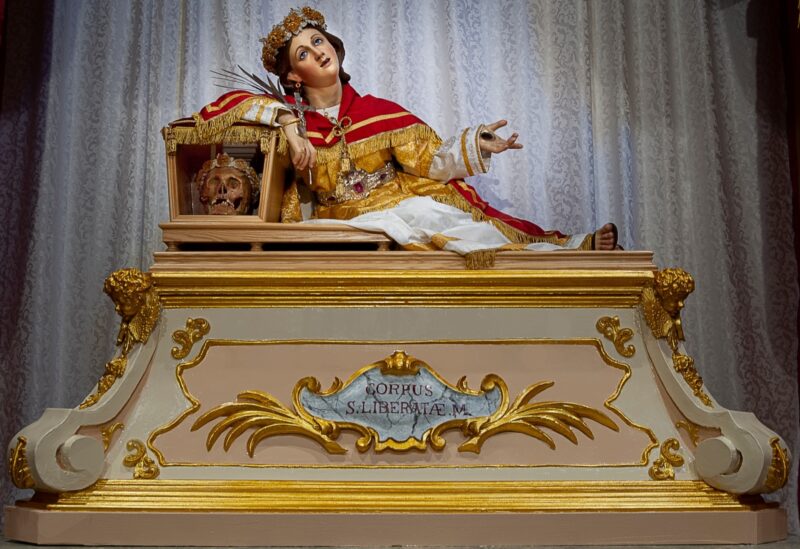While the cranium is chosen and favoured over the rest of the remains of the relics of a saint, complete skeletal remains were once obtained for the veneration of the faithful. Under several altars in our churches, we find preserved bones of numerous saints whom, although their names have been lost through the passage of time, we know that they existed in an environment in which they would have lived a life worthy of being raised to the honour of the altar, as well as meriting them the veneration of the faithful. In Scripture we find examples that help us understand the value of the bodies of those who cooperated with the salvific plan of God. In the Second Book of Kings, we read that a gang of robbers came upon a group of men who were burying a man. Out of fear these men threw the body in the tomb of the Prophet Elisha. When the man’s body came in contact with the bones of Elisha he came back to life (2 Kings 13:21).
The same did not happen when the protestants in northern Europe destroyed the relics of the saint that the Church had under her care. However, these churches did not stay without relics for long. When the Catacombs of ‘dei Giordani’ where discovered at Via Salaria in Parioli in 1578, various translations of relics of saints from Rome began anew to northern European countries ensuring that the Christians who inhabit that part of Europe would not be deprived of holy relics.
Locally, this practice had nothing to do with this. In Malta, this custom became more common between the 17th and 18th centuries. We find that in these two centuries no less than 24 relics of the saints were brought to Malta. For example, we find that the Inquisitor Ruffo sought permission from the Pope to obtain the relics of St Beninus for Vittoriosa, as well as the relics of St Victor for the Parish of Naxxar from the Inquisitor Giovanni Mancinforte.
The arrival of a saint’s relics meant grand celebrations: vigils and processions, fireworks and orchestral performances. The veneration of these relics was so strong that not only were earrings, rings and necklaces donated as in the case of St Consolata of the Discalced Carmelites in Cospicua, but in certain villages, children were also given the names of these saints at Baptism. We find for example that even in recent times in Ħaż-Żabbar the name of Felix and other derived names of St Felicianus, who’s relics are found in this locality, were given to children in his honour. In this particular case, a confraternity was also established in honour of St Felicianus with the aim of undertaking charitable initiatives.




